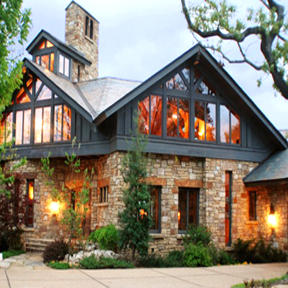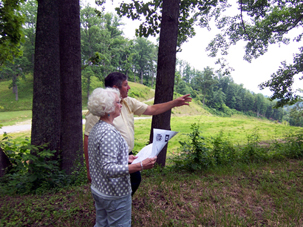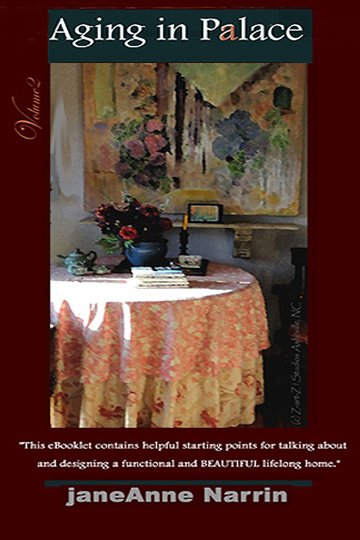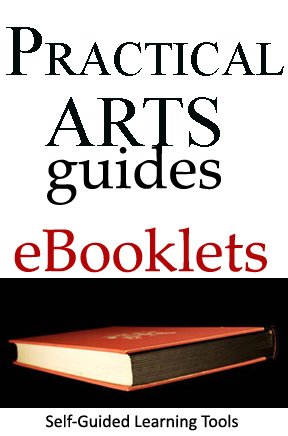aging-in-place
. the features . the benefits .

inspired design by architect Darryl Rantis
aging-in-place
A HOME FOR TODAY AND TOMORROW
AGING-IN-PLACE : A catch phrase used to describe "The ability to live in one’s own home and community safely, independently, and comfortably, regardless of age, income, or ability level." It refers to a CHOICE by Post 50 People to remain in their lifelong home. A good place to begin making that choice is with talking about relevant options for a good action plan.
Home Interiors and Design Remodeling Downsizing Costs
|
"This eBooklet contains helpful starting points GO HERE |
FEATHER YOUR NEST
|
An evolving home is designed to meet your needs today and
tomorrow. Here are creative
ideas and resources for independent living -- regardless of age or
physical ability and a plan of action for all Stakeholders. Explore universal design and an ACTION PLAN for creating feathered nests
that are accessible, functional, beautiful and incorporate universal design elements.
1. PLAN ahead- Envision just one room at a time. Which room that will be?
2. CREATE a budget for up-fitting your home.
3. LEARN to "talk the talk" with aging-in-place professionals.
Start a conversation with all stakeholders.
HOME RE-IMAGINED
A good place to begin making that choice is with talking about relevant options for a good action plan. This self-guided eBooklet has been helpful for many people making it a Top 10 aging-in-place publications at KINDLE. Readers can start a conversation about aging-in-place- with all stakeholders, plan ahead for comfortable living quarters. It makes sense to live full lives in a home of your choice -designed not only for functionality, but for comfort and beauty.
aging-in-place
10 QUESTIONS & LINKS TO START THE CONVERSATION
1. What DESIGN elements do WE consider important to incorporate in a lifelong home? (Think 3 or more.)
2. How might WE leverage boomer influence to to get more age-friendly products in our homes ? (We suggest reading articles by Charles Schewe and Richard Ambrosius)
3. What are three (3) challenges WE might expect to encounter along the way? (Think 3 or more.)
4. How might WE connect with a support system to correct outmoded stereotypes of aging?
5. What kind of a spending plan could be put into place to create a functional and beautiful home? (See this information.)
6. How can WE make home more comfortable for all who live there and visit? (See this good article on Universal Design)
7. Where can WE start to make "age-wise" home improvements? (Here are a few ideas we have found helpful.)
8.What would WE say makes a dwelling place turn into a lifelong PALACE? (Have a brain-storming session with stakeholders.)
9. What are a few home automation technologies that are intriguing?
(Think 3 or more.)
10. Which works best: (a) Go along- wait to see what happens as the years go by- or (b) Go purposefully- and by design?
AGING-IN-PLACE THE FIRST 3 STEPS
onward
START PLANNING A FINE FEATHERED NEST- a home not only functional but beautiful for the long term. Whether you rent or own your dwelling place - whether you plan to "downsize" and move to a new home, or whether you desire to stay in a your lifelong home, a good place to begin is by asking, finding answers to, and talking about making that dream of "Aging-in- P a L a C E " come true.
 "Talking the Talk with Age-friendly Developer" |
LEARN TO "TALK THE TALK" begin the conversation |
AGING-IN-PLACE
It's not too early or too late to talk about " sustainable excellence" or to emphasize a choice for "aging-in-place." Talk with everyone who is or will be involved. Talk with contractors. Talk with experts.Talk with people who are doing it. Talk! Strengthen your conversation by using appropriate terminology.
|
1 LEARN courtesy of |
Accessibility, accessible, active living community, energy smart, green design, healthy places, home automation, LEED, mixed-use-development, neo-traditional development, New Urbanism, pedestrian-friendly, proximity, quality-of- life, Smart Code, social capital, sustainable design, universal design, walkable community. |
AARP in a report entitled, "Aging in Place," recommends " governmental initiatives" and livability that "can be optimized through the incorporation of universal design principles, home automation -telecare and other "assistive technologies" [such as] communications, health and wellness monitoring, home safety and security."
Professional aging-in-place support directly related to the home place is available with specialists such as the Senior Specialist a NAR Designation in Real Estate and addition to Certified Aging-In-Place Specialist (CAPS.)
At the Sage Companion Project we
place special emphasis on an over-arching concept of the value of each
person - regardless of age or physical ability. Cultural Creatives ask: Might this drive
changes in the culture of aging?
|
2 |
 |
It is not too early or too late to plan ahead for making a comfortable home with specific home improvements, spending objectives, and ideas for incorporating age-friendly products and universal design elements .
There is real value in sustainably-engineered environments and in innovation in age-sensitive housing.
But more than this, the concept of regard for self and others brings energy to this trend- maintaining an active lifestyle, and choosing to engage life to the fullest, in other words, “New Vision of Aging.” With this approach mind, the question that arises is whether to move or to stay in our homes.
Many older adults have a positive equity balance on our homes. We have taken advantage of historically low interest rates. As the economy recovers and mortgage rates begin to rise, we may be more inclined to stay in our homes … since, according to The Joint Center for Housing Studies- Harvard University, “… moving implies prepaying …current mortgage with its favorable interest rate, and taking out a new, higher market-rate mortgage."
|
3 Design both a budget for age-friendly modifications AND a Spending Plan.Schedule the changes and implement them. |
TODAY modify "aging-in-place"  |
RESOURCES: The decision to move to another living situation or to stay in your current home can be challenging. When you create
a knowledge base and start conversation today- about - your choices -
a lifelong home- sustainable excellence and design - universal design,
and community, you can make wise choices. Here is a list of links to resources you can use.
R E S O U R C E S
|
"Boomer" -Will Your Home Age as Well as You DO? The "Perfect Nest" Trends in Home Design |
HOW TO Decide About a Lifelong Home HOW TO Budget for and make a Spending Plan HOW TO Begin Talking & Set Priorities with Family and Friends HOW TO Plan, Organize, Schedule & Implement Active Lifestyle- Post 50 The "Boomers" |
aging-in-place
To Move-or-to-Stay - That is the Question
Post 50 People are, right about now, mulling over certain choices in terms of an AT LAST HOME. Planned independence is a serious issue for home owners who are looking to their future comfort. What are the "appropriate? solutions to the aging-in-place dilemma?
And how do we define “appropriate”? With the answer to this question in mind, homeowners may adopt an entirely novel perspective- one that changes the very experience of a lifetime at home. If you are a "savvy" senior, for example, you may insist upon remodeling your present home with leading edge technologies. Enduring excellence through innovative remodeling can mean high performance. This translates into energy and dollar savings.
Building strategies can make the perfect nest a comfortable, healthy and affordable place to live.Now the question arises- What works best- to move or to stay?
Move-or-Stay: When you implement strategies to reduce energy and water usage, you promote renewable energy use, help protect the land and natural resources- good choices when you are opting to stay in your home as you age. If you decide to build new, you can reduce pollution and the waste of natural resources during the manufacturing and construction phases and throughout the life of a home.
To Move or Not to Move . As "boomers" are making choices about Moving (or not) toward (UN) retirement, a number of questions seem to arise- especially around the issues of home improvement.
Spending
plan for updates come up for discussion. Frequently we wonder about ways to ensure being comfortable over the coming years.
Possibly that is why conversations about planning for
“aging-in-place” come to the fore- and with those conversations, the
worthiness of universal design and universal design elements.
SIDE NOTE: In terms of industry planning, this suggests strong employment opportunities for skilled workers who can upgrade/modify homes to accommodate changing needs as we age. Research shows that any number of Boomers who had planned to retire and move to a different home have taken a step back from making that decision.
What age group is likely to buy if we decide to move?
There is a certain demographic more likely to be looking to by a family home. That is the 20-30-something age group. Many "boomers" have been in our homes for years and years, and, like previous generations, many will turn over their homes to younger buyers.
In terms of the age and condition of our homes, our generation tends to live in more recently built housing- typically built from the 1960s and 1990s. So a good number of our homes are around 20-50 years old. As far as the condition goes- many of our homes will be in need systems updates, remodeling, and repair.
Here's an interesting tidbit from The Joint Center for Housing Studies- Harvard University. It seems that recent remodeling activity in houses built in the 1980s and 1990s shows that "...suburban housing stock lends itself to remodeling activity."
|
Home Improvement Projects  |
7 Typical Post 50 1. Updating kitchens and baths 2. Increasing energy efficiency 3. Reconfiguring rooms 4. Updating heating and cooling systems 5. Enlarging garages 6. Adding decks
7. Adding rooms for offices, gyms, or other activities |
ON THE IMPORTANT SUBJECT OF BELONGING & RESPECT
Here is a PDF with-an overview entitled, "Aging in the Community" by Barbara R. Greenberg and Jan Schwarz. Those of us who desiring to live at home as we add up the decades may benefit from reading this document. Among other things, it points out the contribution of older people in the community and the desirability of staying "connected and involved in the life of our neighborhoods. Older adults have time, talents, and experience to share, and many enjoy lending a caring ear for a youngster, another older person, or a parent. Likely to be longterm residents, they bring stability and a rich knowledge of local history."
Research indicates that Baby
Boomers are not inclined to go the traditional retirement-leisure route.
"Baby Boomers fundamentally will reinvent retirement,” James P. Gorman,
president of the Merrill Lynch Global Private Client Group told the
press, “the concept of UNretirement is now a realistic concept across
age cohorts.
REMODELING PROFESSIONALS AND NAHB CERTIFICATION
Did you know that more and more Modern Elders are looking to revitalize our home environments as we plan our lifelong homes- (“aging-in-place”) . In that process we are seeking remodelers who have learned best practices in communicating and interacting with us? These remodelers have come to see that identifying opportunities and developing the skills to communicate effectively and interact with older adults has the advantage of boosting business dramatically- so they have taken NAHB Certification courses such as: “ Marketing & Communication Strategies for Aging & Accessibility”, “Design/Build Solutions for Aging,” and “Accessibility and Business Management for Building Professionals”. The take-aways? Expanded industry knowledge and staying on top of industry trends.
When we think of living comfortably in "feathered-nests" that we create and/or revitalize now, we think of qualifying those who help us make this happen. Quality of life solutions - like installing "invisible" grab bars. makes sense.
CHANGING STEREOTYPICAL PERSPECTIVES OF POST-50 PEOPLE
Such courses support a change in stereotypical views on aging and create opportunities for respect- regardless of age or physical ability as we use "boomer consumer" power wisely to focus on quality of life solutions including ease of navigation, light-filled spaces and nod to nature.
GET ideas for planning a
lifelong home with the eBooklet below.
|
a Top 10 "aging-in-place" |
aging-in-Palace BY DESIGN a Top 10 "aging-in-place" |
Aging-in-Place Models
The Village Model
a grassroots, consumer driven, and volunteer first model-"Volunteers
provide transportation, shopping, household chores, gardening, and light
home maintenance...." This model for aging-in-place relies on the
"collective abilities of the community to respond to challenges face in
the aging process." In addition this model " works to build a shared
sense of community through social activities including potluck dinners,
book clubs, and educational programs."
Another Model- Naturally Occurring Retirement Communities. This occurs where "a congregation of residents 60 and older live cooperatively. "
COSTS
MOST Post-50-People prefer to live independently at a home of their choice. Whether renting, leasing or owning a home, planning ahead for a "forever home" to last through
the years is a top priority. GO HERE to see a side-by-side comparison - costs can be budget-friendly.
THANK YOU FOR SHARING ON BEING SAGE
follow on Twitter | friend on Facebook |follow on Pinterest |forward to a friend
Collect Sage Companion Practical Arts eBooklets on Kindle
SITE SEARCH
HOME ABOUT US DISCLOSURE SPONSORS DONATE SITEMAP
Disclaimer: The nutritional and health information provided on this site is for informational and educational purposes only. It is not intended to be used as a substitute for professional advice of any kind. This information is not intended to diagnose, treat, prevent or cure any illness. Your use of this website indicates your understanding and agreement with these terms.
R E T U R N T O T H E F R O N T P A G E
aging-in-place, age in place











